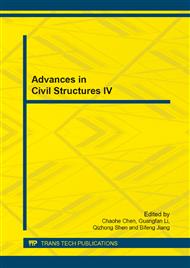p.1424
p.1430
p.1441
p.1449
p.1454
p.1459
p.1464
p.1469
p.1473
Effectiveness of Amino Alcohol-Based Corrosion Inhibitor and its Influence on Concrete Properties
Abstract:
Corrosion of steel is the most important cause of failure of reinforced concrete structures. Corrosion inhibitors are one of the prevention methods used to avoid steel corrosion in the presence of chlorides. In this study, the effectiveness of the amino alcohol-based corrosion inhibitor has been evaluated by long-term steel corrosion monitoring in reinforced concrete. Also its influence on selected concrete properties is studied including compressive strength and chloride diffusion test. The inhibitor was added to the concrete mixture. The results show that the corrosion inhibitor is effective in delay corrosion initiation compared to the control samples. The addition of inhibitors not only improves the compressive strength of the concrete but also reduces the penetration rate of chlorides into concrete.
Info:
Periodical:
Pages:
1454-1458
Citation:
Online since:
July 2014
Authors:
Keywords:
Price:
Сopyright:
© 2014 Trans Tech Publications Ltd. All Rights Reserved
Share:
Citation:


